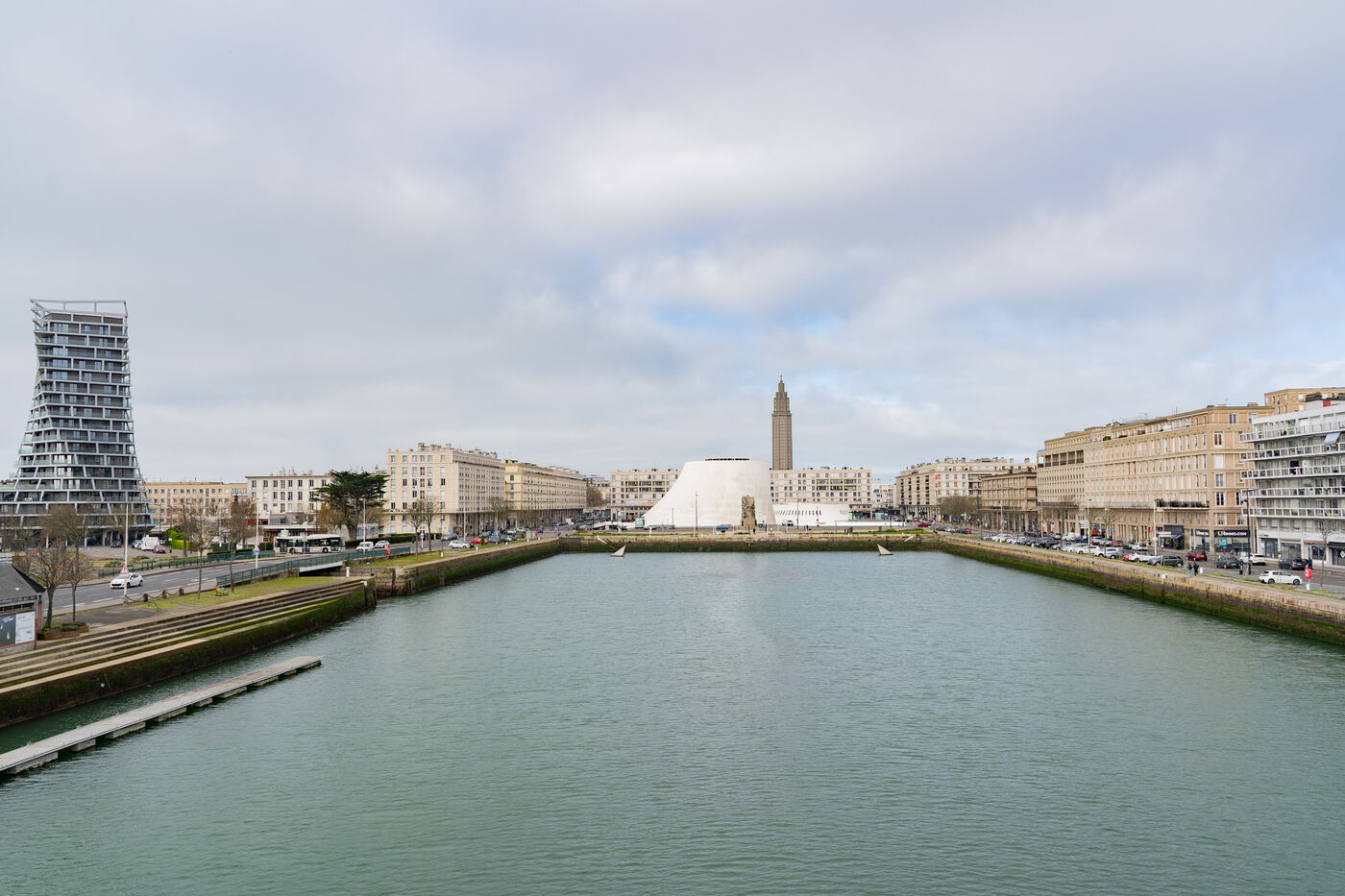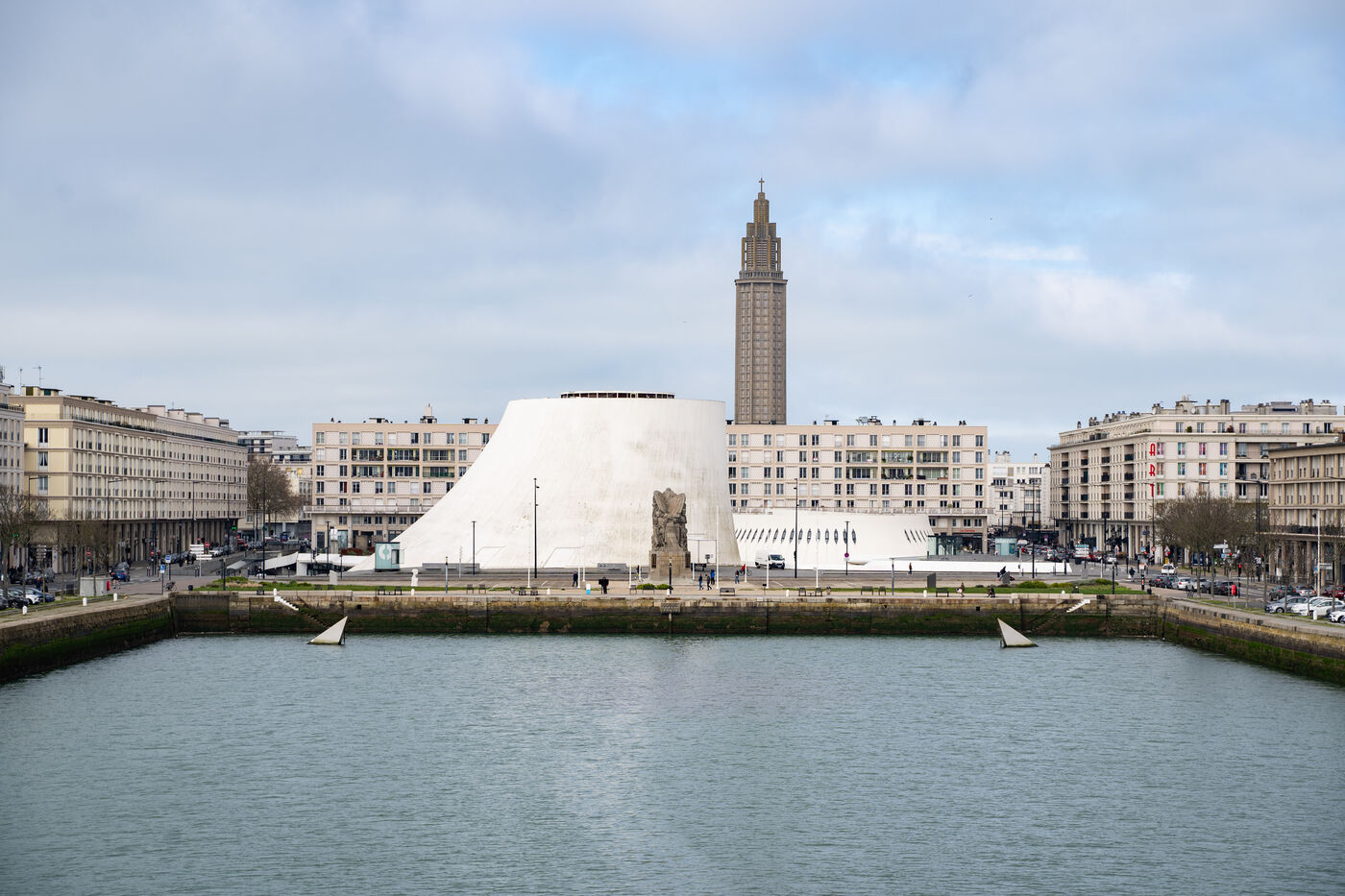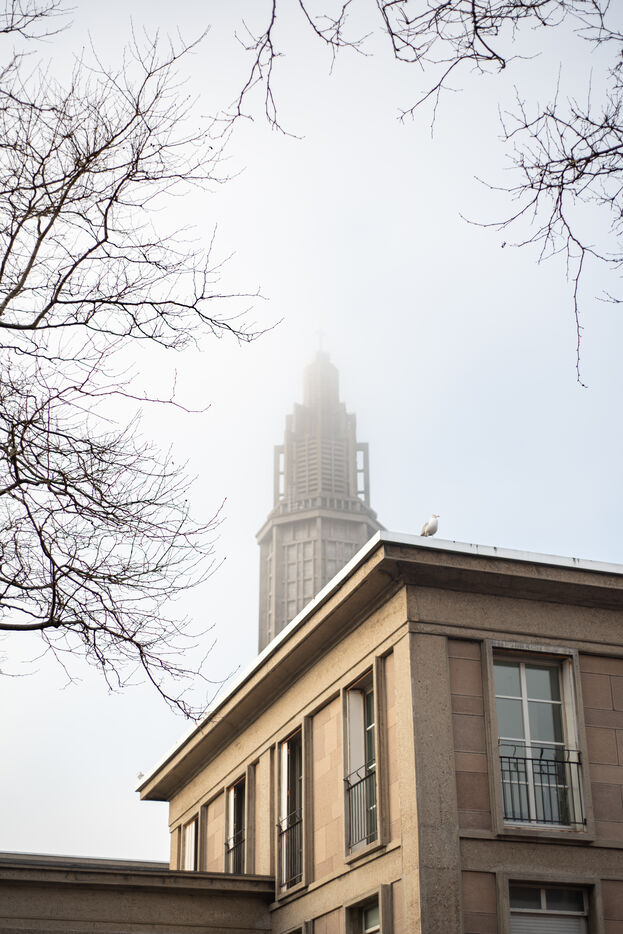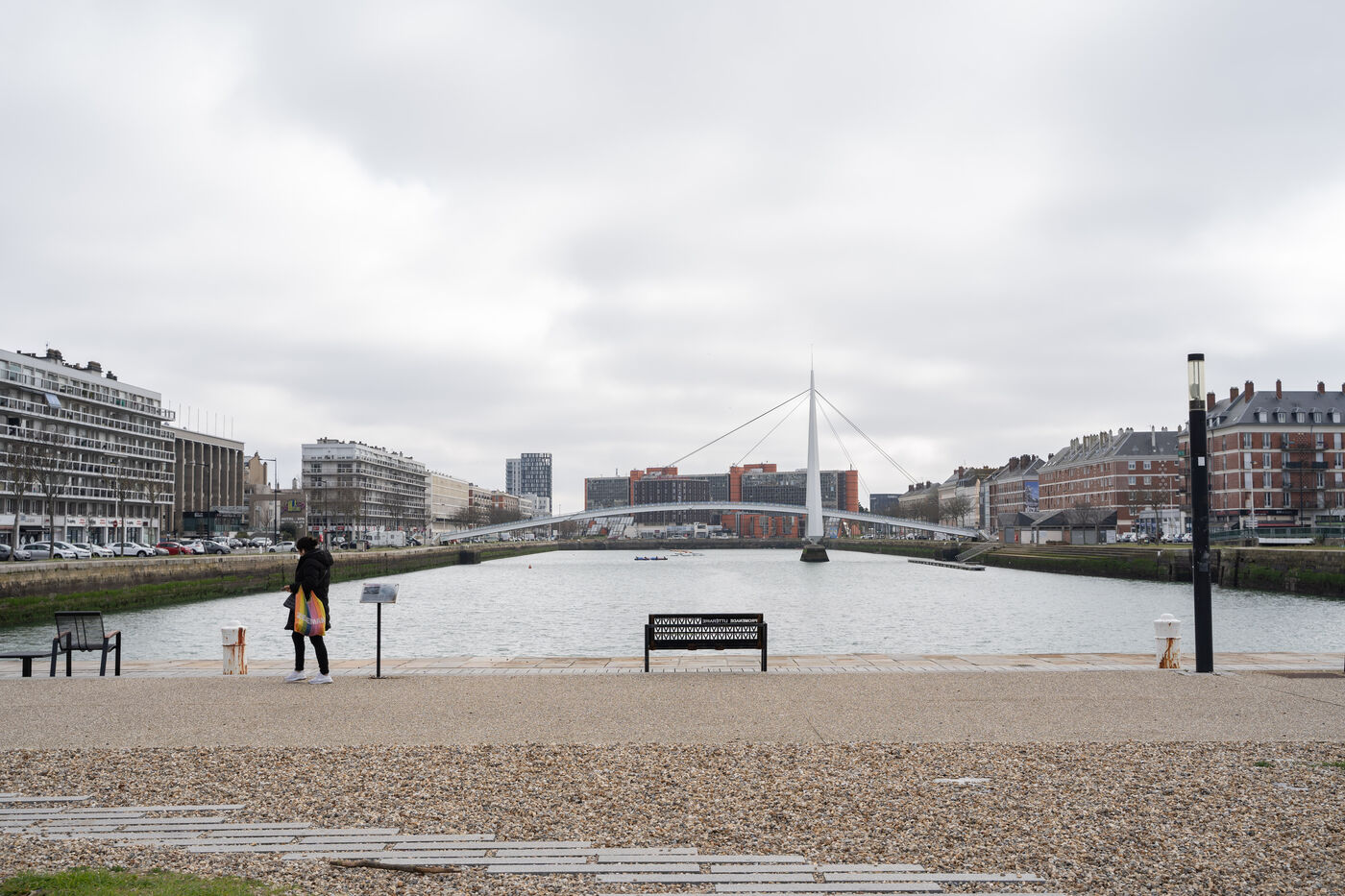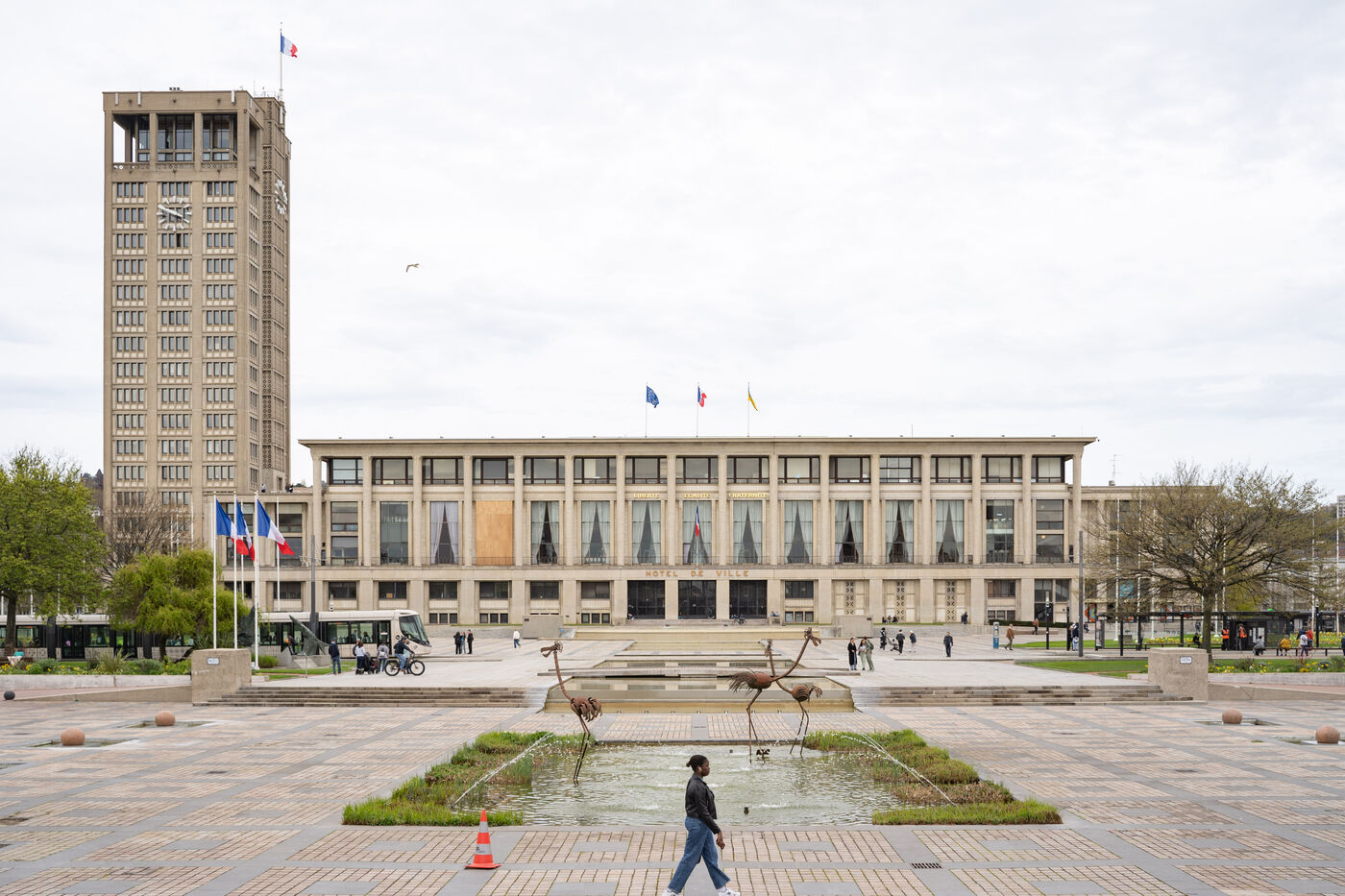Pour accéder à la série en entier, vous devez vous logger ou demander un compte Hans Lucas en cliquant ici.
Le Havre, phénix de béton
Les 5 et 6 septembre 1944 sont deux jours sombres dans l'histoire de la Ville du Havre. Les alliés britanniques, afin d'affaiblir l'occupant allemand, bombardent et détruisent la quasi totalité du centre ville, laissant un champ de ruines de 133 hectares, entrainant la mort d'environ 2000 personnes et la destruction de plus de 12 000 bâtiments.
Après la Libération en 1945, le bilan est lourd, Le Havre est alors considéré comme l'une des villes le plus sinistrée d'Europe.
Le chantier de reconstruction s'annonce aussi énorme qu'urgent, puisqu'il faut à présent rebâtir sur les gravats et reloger au plus vite quelques 40 000 sans abris.
C'est ainsi qu'en 1945, Raoul Dutry, alors ministre de la Reconstruction et de l'Urbanisme, délègue ce vaste chantier à l'architecte Auguste Perret.
Perret s'entoure alors de 18 architectes collaborateurs et, en repartant des plans de François 1er, reconstruit une ville neuve, tout en béton armé. Mais le réveil est dur pour les Havrais traumatisés, et longtemps la ville restera mal aimée de ses propres habitants.
Ce n'est qu'à partir de 2005 que la ville du Havre semble retrouver ses lettres de noblesse avec le classement de son centre ville au Patrimoine mondial de l'Unesco, pour être le seul exemple au monde d'un centre ville de cette taille reconstruit par un seul architecte.
C'est aujourd'hui est une ville attractive, reconnue mondialement pour son architecture singulière, et son ambiance unique où mer et béton sont en symbiose.
Le Havre, a concrete phoenix
The 5 and 6 September 1944 were two dark days in the history of Le Havre. In order to weaken the German occupiers, the British allies bombed and destroyed almost the entire city centre, leaving a 133-hectare field of ruins, resulting in the deaths of around 2,000 people and the destruction of more than 12,000 buildings.
After the Liberation in 1945, the toll was heavy, and Le Havre was considered to be one of the worst-affected cities in Europe.
The reconstruction worksite was as enormous as it was urgent, since it was now necessary to rebuild on the rubble and rehouse some 40,000 homeless people as quickly as possible.
In 1945, Raoul Dutry, then Minister for Reconstruction and Town Planning, commissioned the architect Auguste Perret to carry out this vast project.
Perret surrounded himself with 18 collaborating architects and, using the plans of François 1er as a starting point, rebuilt a new city, all in reinforced concrete. But it was a rude awakening for the traumatised people of Le Havre, and for a long time the city remained disliked by its own inhabitants.
It wasn't until 2005 that the city of Le Havre seemed to regain its pedigree, with the listing of its city centre as a UNESCO World Heritage Site, as the only example in the world of a city centre of this size rebuilt by a single architect.
Today, Le Havre is an attractive city, renowned the world over for its unique architecture and its unique atmosphere where sea and concrete are in symbiosis.
